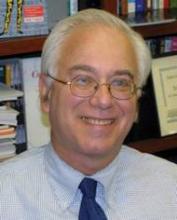Humans can host up to 6 pounds of microbes in our gut alone. We comprise about 10 trillion human cells – they comprise 100 trillion bacterial cells. Their genetic material outstrips us even more impressively – we are the product of 20,000 human genes. But inside our gut, we carry up to 2 million microbial genes.
Emerging research suggests that these complex communities – which interact fluidly not only with their human host, but also with each other – play important roles in health and disease. They appear to confer both protection from and risk for many chronic illnesses, from asthma and allergies to obesity and diabetes.
And what we don’t know about them dwarfs what we do know, according to Dr. Robert Ratner, the chief medical officer of the American Diabetes Association.
“We’re literally at the forefront of an unknown universe,” Dr. Ratner said at the annual advanced postgraduate course held by the ADA. “Research into the microbiome and how it interacts with human health is one of our most intriguing investigations.”
The microbiome is as vastly individual as every person who carries it. The differences are myriad, in the amount and variety of species, and in the sheer numbers of microbes that make up each community. Each region of the gut, from mouth to rectum, hosts a completely different population.
Two main phyla populate the gut: Bacteroidetes, which are involved in protein and carbohydrate breakdown, and Firmicutes, which promote the absorption of fat. The ratios of these communities, however, has changed over the last 30 years, diverging along a path that mirrors global spikes in obesity, diabetes, and allergic and inflammatory disorders.
“We have seen dramatic increases worldwide in these disorders,” Dr. Ratner said. “We’ve also seen decreased diversity of the microbiome, with a progressive change in density from Bacteroidetes to Firmicutes. These are associations – not causations – but I think the time has come to ask ‘What are we doing to change these bacteria?’ ”
The rampant use of antibiotics is the first place suspicion falls – and it’s no wonder, since the epidemiologic changes Dr. Ratner described began to appear shortly after World War II. Antibiotics could exert their flora-changing effects a couple of ways, he noted.
They directly alter the composition of communities in the person who consumes the drug, even if just in the short-term. There is someevidence that early-life antibiotics, though changing the microbiome only temporarily, can change fat metabolism for the entire lifespan (Cell 2014;158:705-21).
The associations between an altered gut microbiome and long-term health is unproven. But a picture does seem to emerge when viewed in light of the exponential increases in obesity and its attendant rise in diabetes.
The Type 1 Diabetes Prediction and Prevention Project (DIPP) is an effort to predict and search for means to delay or prevent type 1 diabetes. Launched in 1994, it’s following a cohort of children who had genetic risk factors for type 1 diabetes. Data have consistently shown that those who develop the disease have significantly lower diversity in their gut flora, Dr. Ratner said. Certain species of Bacteroides increased the risk of autoimmunity by up to 20 times.
Again, he said, this is association, not causation. But some very new evidence suggests that these are functional, not just observational, links. “It does now appear that our microbes are actually controlling our metabolism,” he said. “Some of these species liberate lipopolysaccharides, which function as endotoxins. These cross the mucosal barrier in the intestine, enter the interstitial space, and set up an inflammation that impacts the liver and adipocytes, potentially decreasing insulin sensitivity.”
Unpublished data from the laboratory of Dr. Martin J. Blaser at New York University show for the first time that a specific bacterium can cause diabetes, and removing it cures the disease. The bacterium in question, Ralstonia, is a gram-negative pathogen that contaminates drinking water. Mice engineered as a model of prediabetes gained much more weight when they consumed live Ralstonia than when they got a heat-inactivated version. They also developed insulin resistance and hyperglycemia in the presence of the live version. But when the same mice were given a Ralstonia antibody, they lost weight and their glycemic profile normalized.
“This is the first direct evidence we have of causality,” Dr. Ratner said.
Strong evidence of causation is also emerging in the surgical realm. Roux-en-Y gastric bypass seems to change the microbiome in a way that facilitates weight loss, beyond caloric intake.Randy Seeley, Ph.D., of the University of Michigan, Ann Arbor, has been studying how weight-loss surgery affects the microbiome. He theorizes that the physical manipulation of the gut induces what he calls “enteroplasticity” – a fluid adaptation of both the gut’s structure and its bacterial communities to the altered physical and chemical environment. “There’s more going on during postsurgical weight loss than just food restriction and malabsorption,” Dr. Seeley said in an interview. “It’s logical to think that when you do this kind of surgery, the microbes in the intestine will change.”


